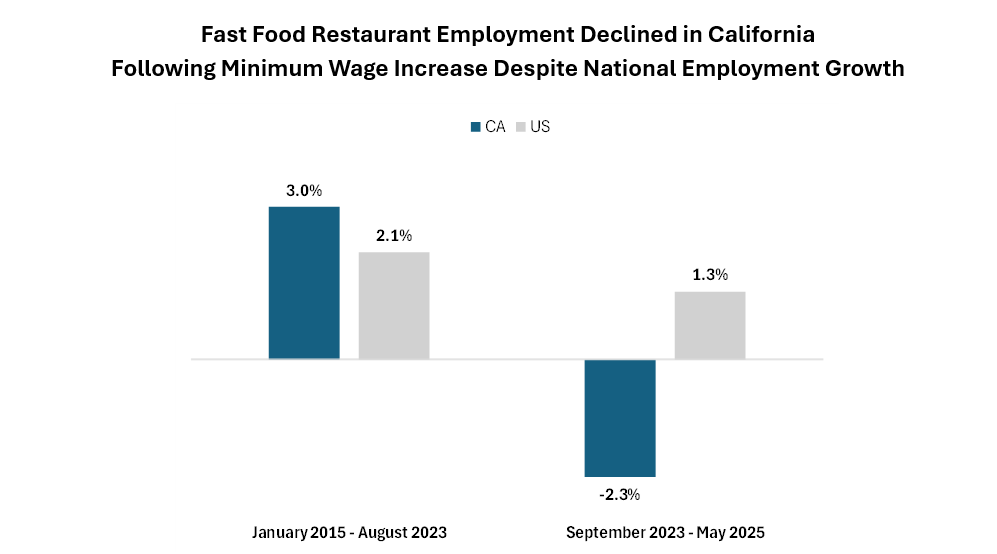As the New York Post reported,
Newsom’s deputy director of communications Tara Gallegos disputed the findings of the piece, pointing out to Fox News Digital that the research paper was linked to the Hoover Institution, a public policy think tank she claimed has published “false or misleading information” about California’s minimum wage hike “that later had to be completely retracted.”
Gallegos also shared a San Francisco Chronicle article from Oct. 2024, which stated that the results of the wage hike “defy a lot of the doom-and-gloom predictions made when Gov. Gavin Newsom signed AB1228 back in September 2023.
Often someone attacks the researchers rather than the research because the facts are not on their side. And this is the case with the impact of the minimum wage increase.
The Bureau of Labor Statistics (BLS) tracks detailed employment data including employment at “Limited-Service Restaurants and Other Eating Places”. This category tracks national and state level employment at restaurants that serve food at a counter. While it includes counter service restaurants not impacted by the minimum wage hike, this data provides a good proxy for those restaurants that were impacted.
The chart below compares the growth in California’s employment at these establishments to the nation overall. The first two bars compare the average annual growth between January 2015 and August 2023 – right before the $20 minimum wage for fast food workers in California became effective. During these 8 years, the average annual growth rate in fast-food jobs was faster in California (+3.0 percent) than the national average (+2.1 percent). Also important, while not pictured, the monthly growth patterns were similar.
Then things changed in September 2023. After the $20 minimum wage was implemented, employment opportunities declined in California (-2.3 percent) even though they grew nationally (+1.3 percent), the second set of bars.

This discrepancy is precisely what the NBER paper was evaluating. Using a different data set, and much more sophisticated analysis, their study documents that the minimum wage hike cost the state 18,000 jobs.
The author’s results make perfect sense both theoretically and from a simple review of the data. It also raises concerns regarding Newsom’s willingness to follow the facts. And in this case the facts are clear – the administration’s minimum wage hike is reducing jobs and destroying the long-run opportunities enabled by a vibrant entry-level job market.
Wayne Winegarden, Ph.D. is a Sr. Fellow in Business and Economics and Director of the Center for Medical Economics and Innovation at the Pacific Research Institute.

